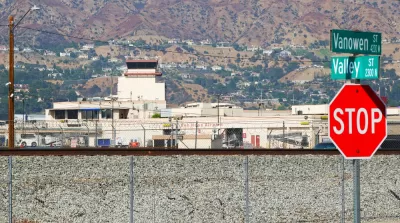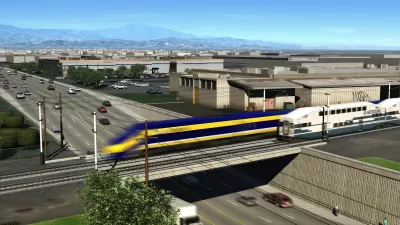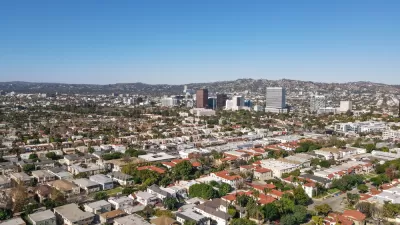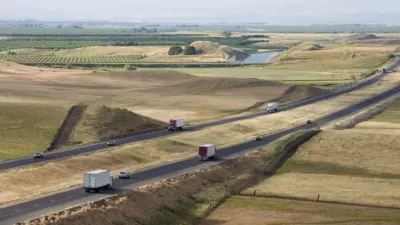The Hollywood Burbank Airport has done what no one in the Los Angeles area had dared to do: sue the California High Speed Rail project.

The Hollywood Burbank Airport has filed a lawsuit that could delay the California High Speed Rail project—it's the first such lawsuit in the Los Angeles region, although the project has previously attracted other forms of opposition.
"The suit alleges that the rail authority’s plans for tracks and an underground station near the airport could affect its operations and safety," reports Ralph Vartabedia for the Los Angeles Times. "It asks the state agency to reformulate its designs with a new environmental impact report that it would circulate for public comment."
The news of the lawsuit broke the same day that the California High Speed Rail Authority published the environmental impact review (EIR) for a key section of the project in Northern California. An EIR for the Burbank to downtown Los Angeles’ Union Station section of the project, approved by the California High-Speed Rail Authority in January 2022, triggered the lawsuit from the Hollywood Burbank Airport.
"If the airport succeeds in asserting the rail plan would harm its operations, it is unclear what mitigations the rail authority would be forced to make and how much delay it would cause," reports Vartabedia. "In the worst case, the suit could force the rail authority to move its right of way, requiring a new environmental analysis and considerable additional costs."
More details on where the Burbank to Downtown Los Angeles section fits into the planning and construction timeline for the beleaguered project are included in the source article below.
FULL STORY: Hollywood Burbank Airport files environmental lawsuit against California’s bullet train

Alabama: Trump Terminates Settlements for Black Communities Harmed By Raw Sewage
Trump deemed the landmark civil rights agreement “illegal DEI and environmental justice policy.”

Planetizen Federal Action Tracker
A weekly monitor of how Trump’s orders and actions are impacting planners and planning in America.

The 120 Year Old Tiny Home Villages That Sheltered San Francisco’s Earthquake Refugees
More than a century ago, San Francisco mobilized to house thousands of residents displaced by the 1906 earthquake. Could their strategy offer a model for the present?

LA’s Tree Emergency Goes Beyond Vandalism
After a vandal destroyed dozens of downtown LA trees, Mayor Karen Bass vowed to replace them. Days later, she slashed the city’s tree budget.

Sacramento Leads Nation With Bus-Mounted Bike Lane Enforcement Cameras
The city is the first to use its bus-mounted traffic enforcement system to cite drivers who park or drive in bike lanes.

Seattle Voters Approve Social Housing Referendum
Voters approved a corporate tax to fund the city’s housing authority despite an opposition campaign funded by Amazon and Microsoft.
Urban Design for Planners 1: Software Tools
This six-course series explores essential urban design concepts using open source software and equips planners with the tools they need to participate fully in the urban design process.
Planning for Universal Design
Learn the tools for implementing Universal Design in planning regulations.
Ada County Highway District
Clanton & Associates, Inc.
Jessamine County Fiscal Court
Institute for Housing and Urban Development Studies (IHS)
City of Grandview
Harvard GSD Executive Education
Toledo-Lucas County Plan Commissions
Salt Lake City
NYU Wagner Graduate School of Public Service





























